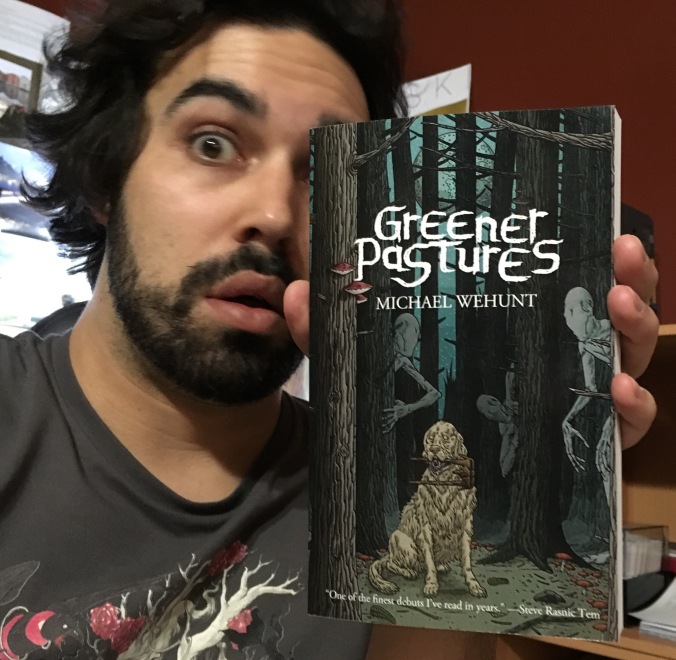Three things before we start:
First, I’m a big fan of Duncan Jones’ previous works, Moon and Source Code, two taut, muscular sci-fi films that strike the balance between being clever, cool, and making me really feel something for the characters.
Second, the extent of my involvement with and enthusiasm for the Warcraft universe begins and ends with an hour spent playing Warcraft III quite a few years ago. I’ve never played the MMORPG and I know virtually nothing about the world and its mythology. In other words, I have no emotional investment – positive or negative – in the games.
And third: it’s been hard to avoid the waves of vitriol that have been crashing against Jones’ attempt to adapt this popular franchise for the big screen, so other than the – admittedly faint – hope that this wouldn’t be a stain on the director’s otherwise excellent résumé, my expectations walking into Warcraft were set pretty close to zero.
Spoiler alert: it’s not even remotely shit.
Jones’s script (co-written with Charles Leavitt) has adapted what I believe is the first game’s story, about the origin of the war between humans and orcs in the kingdom of Azeroth. Mapping out both sides with an impartial hand, we follow a warband of orcs led through a portal from their dying world into the lush and peaceful Azeroth by the leery, villainous Gul’dan (Daniel Wu). Among them, Toby Kebbell’s Durotan, with his heavily pregnant wife Draka (Anna Galvin), and the half-orc slave Garona (Paula Patton, managing to look great through the green makeup and prominent tusks).
Meanwhile on the human side we have Vikings’ Travis Fimmel as knight Anduin Lothar, young renegade magician Khadgar (Ben Schnetzer) and the somewhat sneaky “Guardian” Medivh, played with a kind of sweaty impatience by Ben Foster (I mean that in a good way). I also found it weird and hilarious and awesome that the noble king and queen are played respectively by Preacher’s Dominic Cooper and Ruth Negga. So Azeroth is ruled by Jesse Custer and Tulip.
Contrary to popular opinion, I didn’t find the story or the world-building too difficult to follow; at its heart Warcraft has a fairly simple narrative that’s embellished by action, conflict and character work. In other words, those like me unfamiliar with the source material should find this easily accessible.
I’d heard a lot of criticism that many scenes in the film look cheap or tacked together, given its heavy reliance on green screen performances and CGI. Going into it I had expectations of work as shoddy as Baz Luhrmann’s Australia (or really any of Luhrmann’s films). But actually, apart from the odd lapse, like King Llane’s plasticky armour, this film looks spectacular. Its aesthetic is a kind of chunky, bright fantasy and even if that isn’t your cup of tea you’d be an idiot to not at least appreciate the incredible performance capture effects of the orcs. The precision with which every micro-expression and tic is captured makes these already well-developed and -acted characters one of the film’s major victories.
Speaking of which, Toby Kebbell – an actor I’ve admired since his knockout performance in Guy Ritchie’s RocknRolla – is fantastic as Durotan. He’s a beautifully rounded character, and his interactions with his wife and son are some of the more interesting, quiet moments of the film.
Paula Patton’s performance as conflicted outcast Garona is another standout. She’s one of the more complex and interesting characters in the film, and writers take her in an unexpected and refreshing direction.
Jones handles the big action scenes deftly, too; they’re fun, well-executed and often quite tense.
The film’s not without its flaws though. Some of the dialogue can be quite heavy-handed in that taking-itself-too-seriously type of fantasy, with lots of lore and syllabically obese names, and the villains’ motivations aren’t exactly rock-solid but there’s a nice element of tragedy (and addiction) to Ben Foster’s Medivh that makes this a little more forgivable. The human characters aren’t quite as developed or interesting as the orcs. Ruth Negga seems a little wasted as the queen.
I read an interview with Jones where he explained that his original cut of the film was half an hour longer than the theatrical version. The studio’s editorial interference is glaring at times. Certain character arcs culminate in nothing or remain underdeveloped, and the ending is a sloppy post-climax rush.
I don’t know how many of these issues would be fixed with a director’s cut, but I’d love to see one. Hell, I even hope the film makes enough money to warrant a sequel, and that Jones returns to this (potential) franchise he so lovingly brought to the big screen. He’s crafted an interesting world with engaging characters and some great conflict, and this first film comes across as a kind of epic tragedy painted bright and bold.
So sure, it’s not exactly a masterpiece, but it definitely didn’t deserve the overwhelmingly negative critical reception it’s received so far. Not only did I find Warcraft to be an enormously entertaining film, the amount of emotional depth was a very pleasant surprise.

